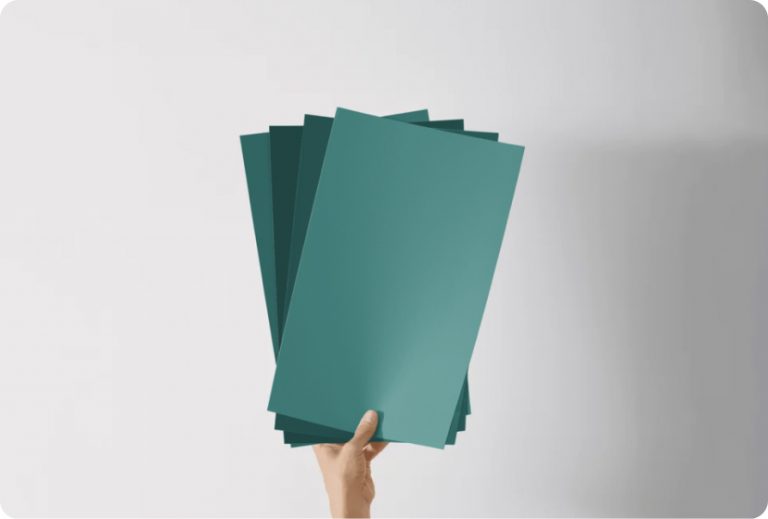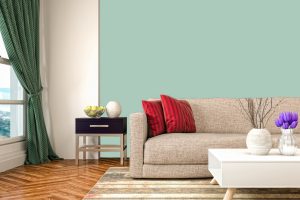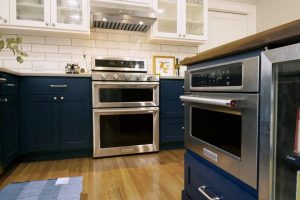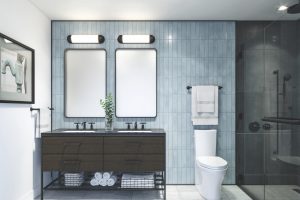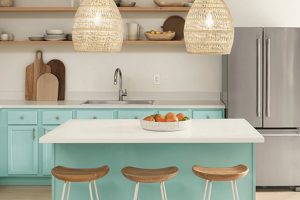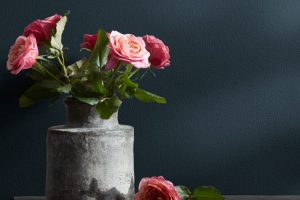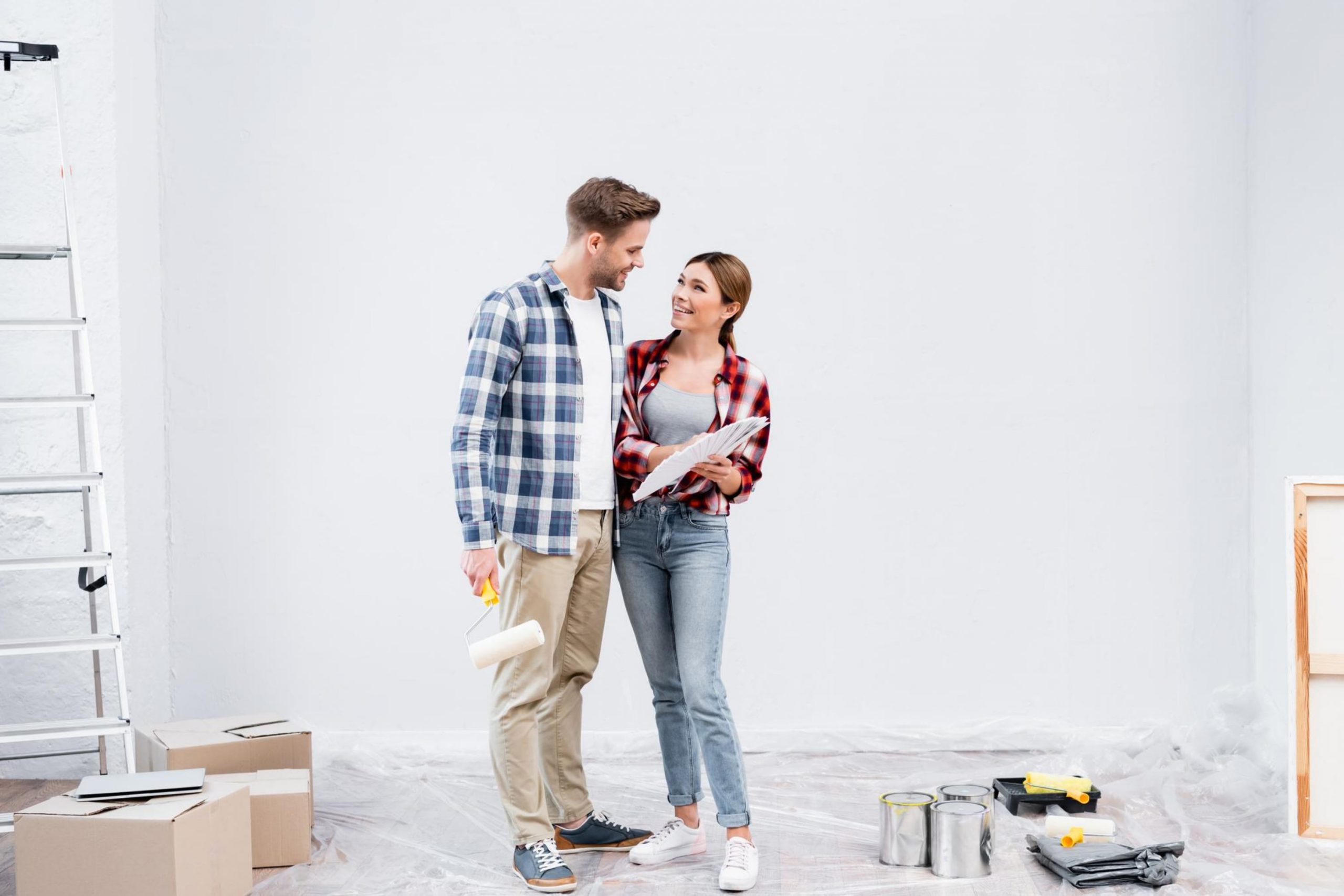Color is a sensory experience, an evocative language, and a pervasive factor in our daily lives, shaping how we perceive and interact with the world around us. It profoundly impacts our moods, emotions, and reactions. When it comes to home decoration and design, color selection is paramount, as it ultimately dictates the ambiance of a space.
This article delves into the character and nuances of a specific color – Sherwin-Williams 6797, or Jay Blue, examining its undertones, coordinating colors, and ideal usage in different parts of the home.
By understanding these factors, homeowners, interior designers, and architects can leverage the distinct attributes of this color to create captivating environments.
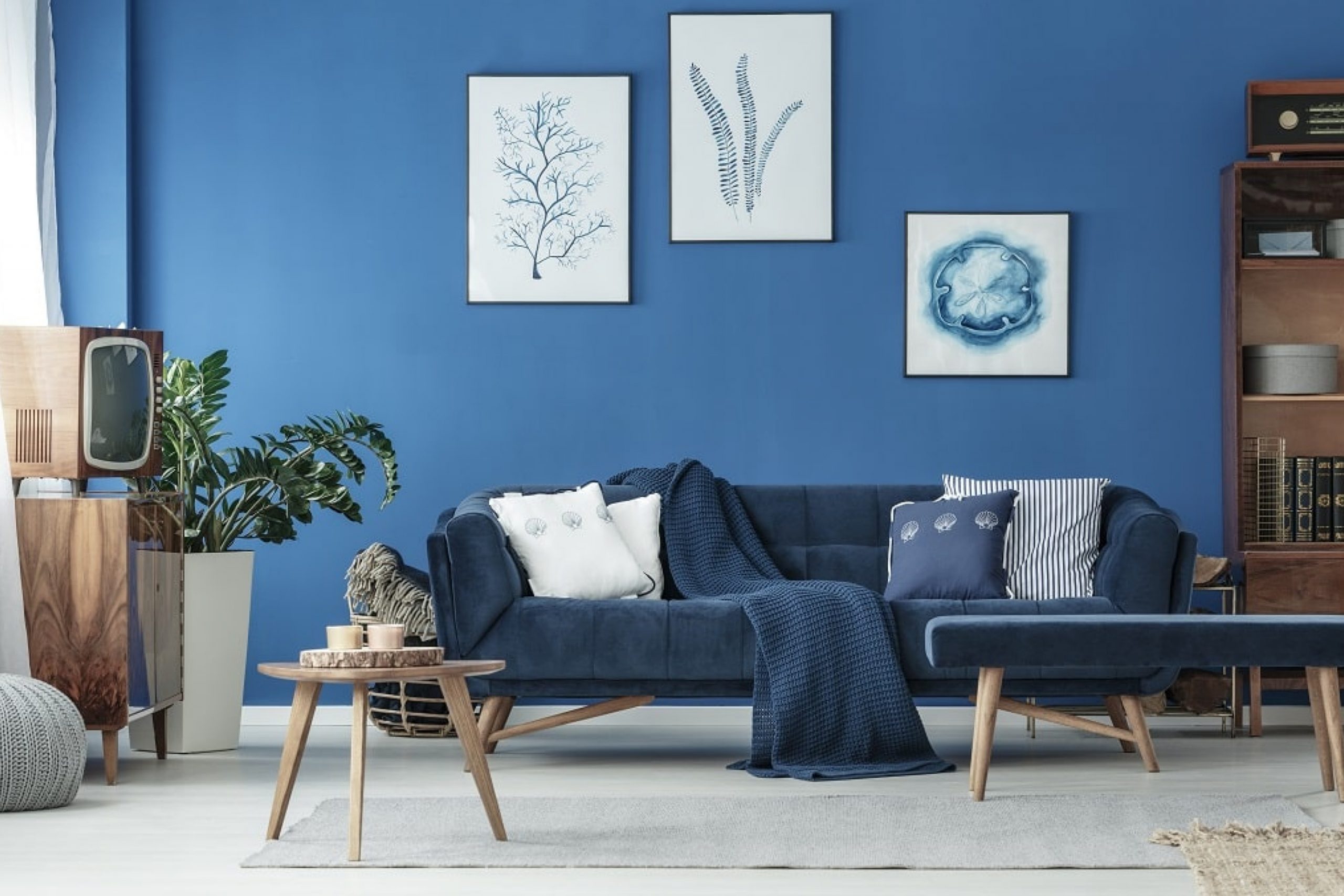
What Color Is SW 6797 Jay Blue?
SW 6797 Jay Blue, as its name suggests, is reminiscent of the striking plumage of a jaybird. It’s a medium-to-dark shade of blue with a subtle depth and vibrancy, embodying the charm of a clear, cloudless sky and the depth of a twilight vista. The hue leans towards true blue, carrying a serene, calming quality intrinsic to blues but with an added richness that gives it a certain presence.
Simultaneously bold yet soothing, SW Jay Blue’s character is dictated by its striking balance of depth and tranquility. In essence, it captures the arresting allure of nature, translating it into color with a unique, versatile personality.
Its capability to evoke both the strength of a stormy sea and the tranquility of a peaceful sky makes it an intriguing choice for various applications, particularly in interior design.
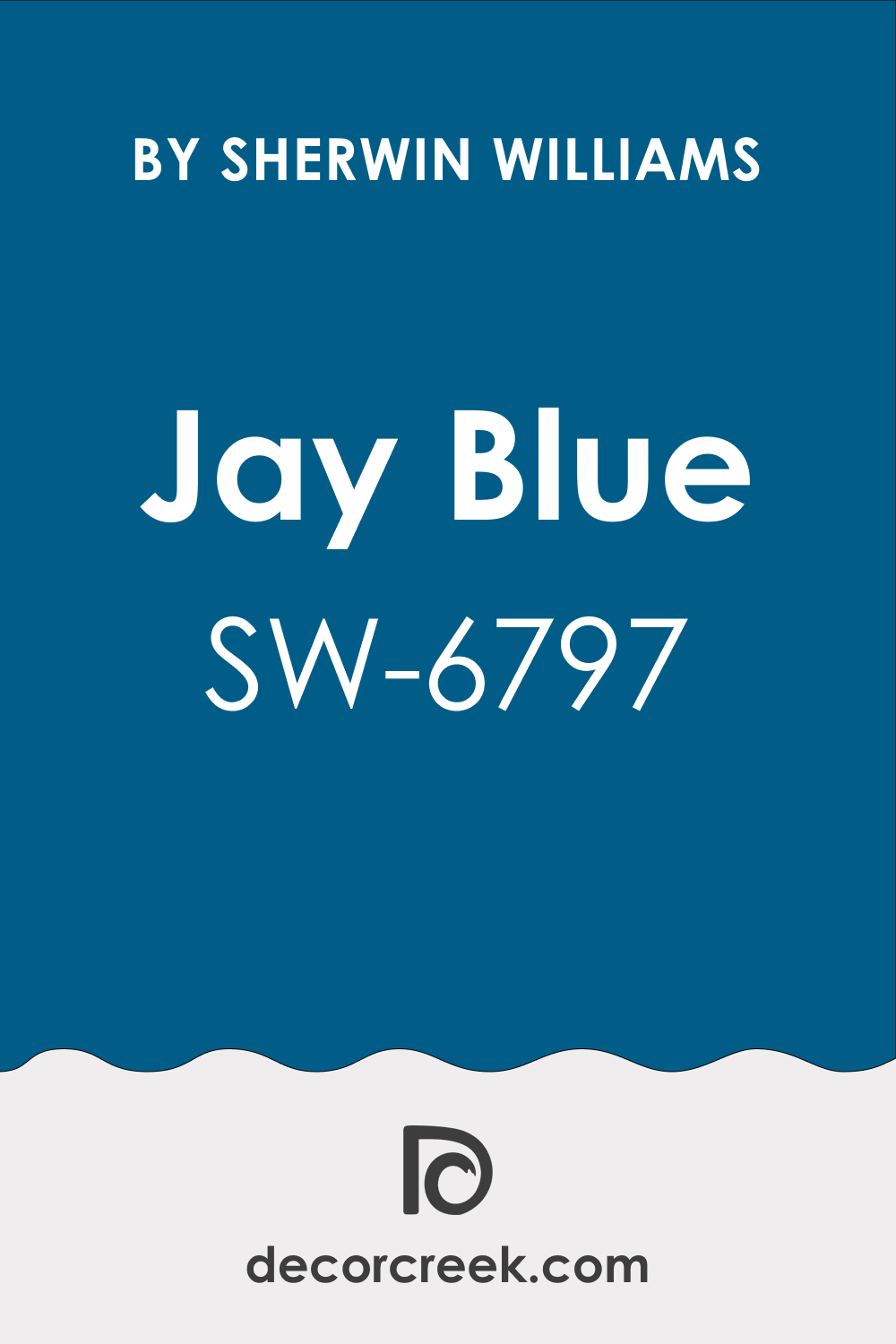
Ever wished paint sampling was as easy as sticking a sticker? Guess what? Now it is! Discover Samplize's unique Peel & Stick samples.
Get paint samples
Is It a Warm Or Cool Color?
Categorized under the blues, SW 6797 Jay Blue is a cool color. In the color spectrum, cool colors are associated with water, sky, ice, and night, eliciting feelings of calmness, relaxation, or mystery. In interior design, cool colors are favored for their ability to make spaces appear larger and more open. Jay Blue, with its soothing and spacious associations, is no exception to this rule.
Undertones of SW 6797 Jay Blue
An understanding of a color’s undertones— the colors lurking beneath the surface— is crucial in color theory. They subtly affect the overall hue and how we perceive it. Here are three undertones of SW 6797 Jay Blue:
- Slate Grey: This undertone adds an element of sophistication to Jay Blue, giving it depth and versatility.
- Sea Green: A faint hint of sea green undertone introduces a touch of freshness and organic quality.
- Cobalt: Cobalt undertones intensify Jay Blue’s richness, strengthening its identity as a bold color.
These undertones influence how Jay Blue appears under various lighting conditions and when paired with different colors. They contribute to its adaptability and appeal, making it a captivating choice for a wide range of design styles and settings.
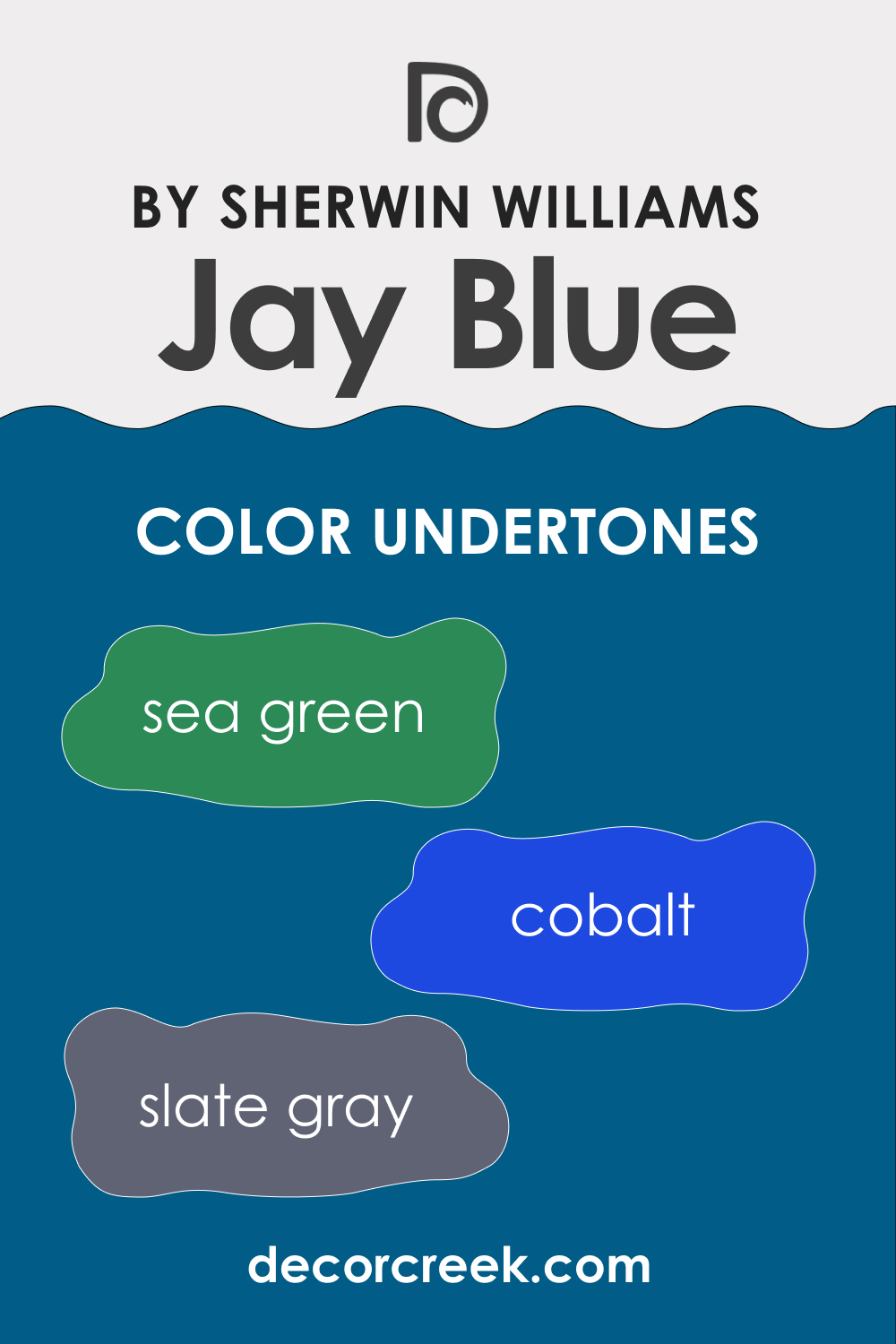
Coordinating Colors of SW 6797 Jay Blue
Coordinating colors are those hues that work harmoniously with a specific color, enhancing its appeal and creating a balanced, visually pleasing scheme. In the case of SW 6797 Jay Blue, it has a variety of coordinating colors that not only enhance its blue undertones but also create a rich and inviting palette.
- SW 6798 Iceberg (CHECK A SAMPLE): A lighter shade of blue that complements the depth of Jay Blue, creating a serene, ocean-inspired palette.
- SW 9109 Natural Linen (CHECK A SAMPLE): This neutral hue offers a soft contrast to Jay Blue, providing balance and warmth to a room.
- SW 9084 Cocoa Whip (CHECK A SAMPLE): An earthy taupe, Cocoa Whip grounds the coolness of Jay Blue, adding a touch of sophistication.
In addition to these, we can suggest three other coordinating colors to diversify your design options.
- SW 6258 Tricorn Black (CHECK A SAMPLE): As a deep, dramatic shade, Tricorn Black can highlight the crispness of Jay Blue, providing a striking contrast that adds a bold touch to your interior.
- SW 9138 Stardew (CHECK A SAMPLE): This muted blue-gray color can add depth to a room painted in Jay Blue, offering a soothing, monochromatic aesthetic.
- SW 7008 Alabaster (CHECK A SAMPLE): A pure, bright white, Alabaster can refresh and lighten a Jay Blue space, creating a sharp, clean contrast and highlighting Jay Blue’s richness.
The idea behind coordinating colors is to create a visually harmonious color scheme that provides variety without overwhelming the space. By using these coordinating colors, you can highlight specific architectural features, differentiate between different areas or rooms, or simply add visual interest and depth to your décor.
Remember, coordinating colors should not compete with the primary color; instead, they should enhance and enrich it.
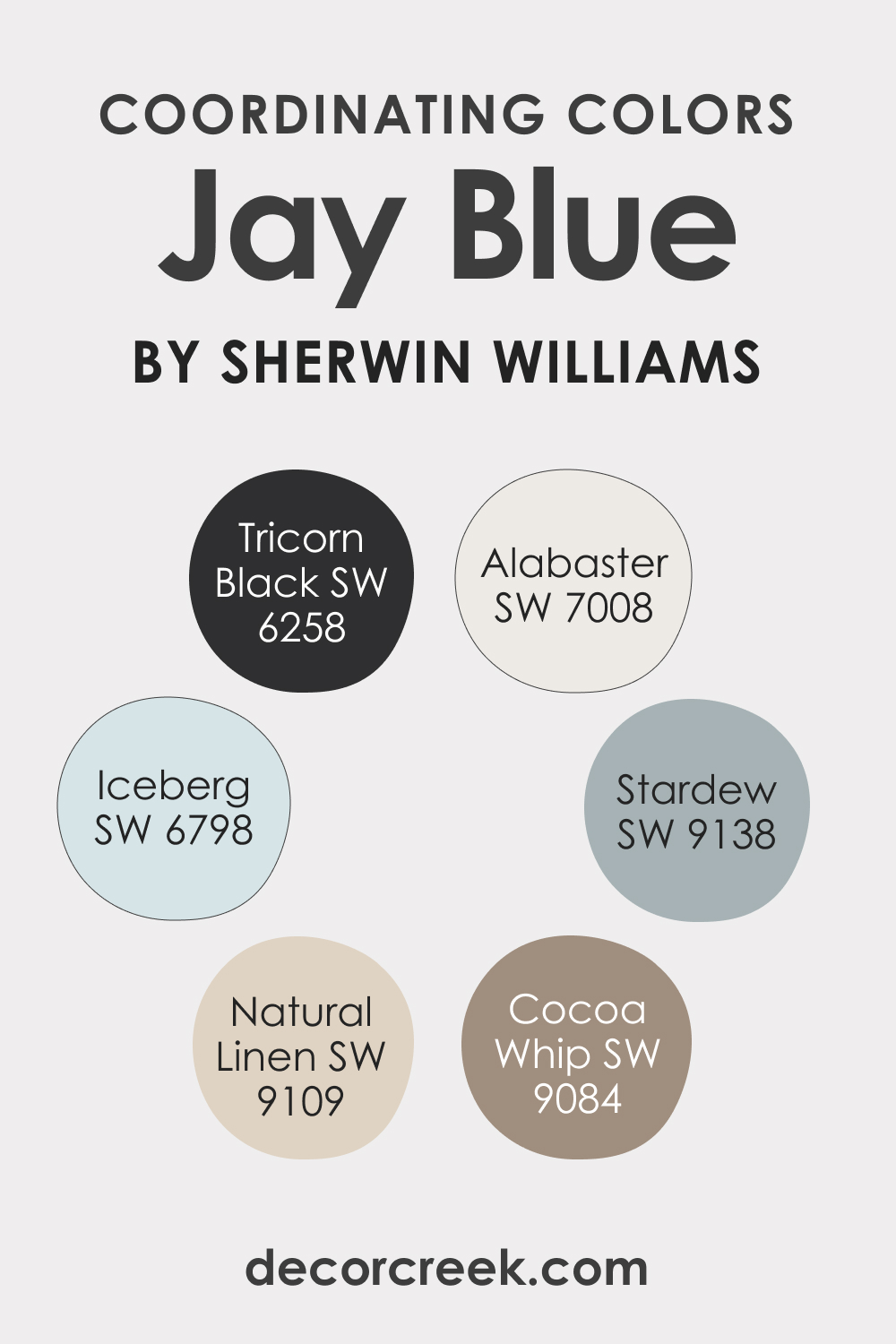
How Does Lighting Affect SW 6797 Jay Blue?
Lighting has a significant impact on how we perceive color, and SW 6797 Jay Blue is no exception. Natural light, artificial light, and the amount and direction of light – all can subtly or dramatically change the appearance of this color. In bright, natural daylight, Jay Blue can appear more vibrant and lively, showcasing its crisp blue undertones.
Under soft, warm artificial light, such as incandescent bulbs, it might take on a slightly softer, more muted hue.
Cooler light sources, like LED or fluorescent lights, can emphasize the blue undertones, making it seem colder. Hence, when planning to use this color, it’s essential to consider the lighting conditions of the room.
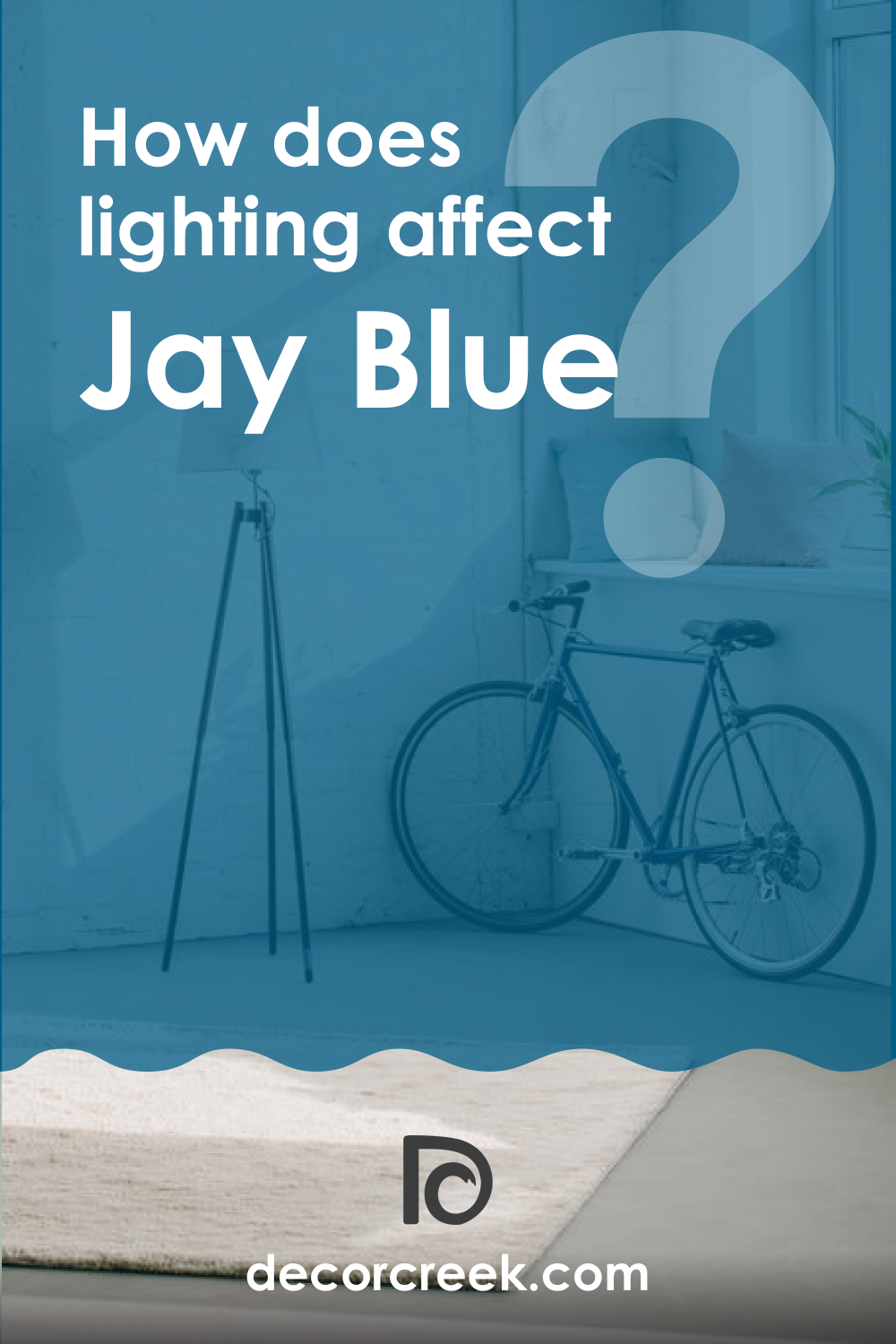
LRV of SW 6797 Jay Blue
LRV, or Light Reflectance Value, measures how much light a color reflects compared to pure white (which has an LRV of 100). The LRV of SW 6797 Jay Blue is 9, meaning it is on the darker end of the spectrum, absorbing more light than it reflects. This attribute can influence how the color is perceived in different environments and lighting conditions.
Rooms painted in colors with a low LRV, like Jay Blue, can feel smaller, cozier, and more intimate because they absorb light and minimize reflections. The low LRV also means that Jay Blue will look more saturated and intense, creating a bold and dramatic ambiance.
Therefore, it is essential to understand that even though Jay Blue might appear vibrant and lively under direct sunlight, it can become quite dark in low-light conditions or shadowed areas.
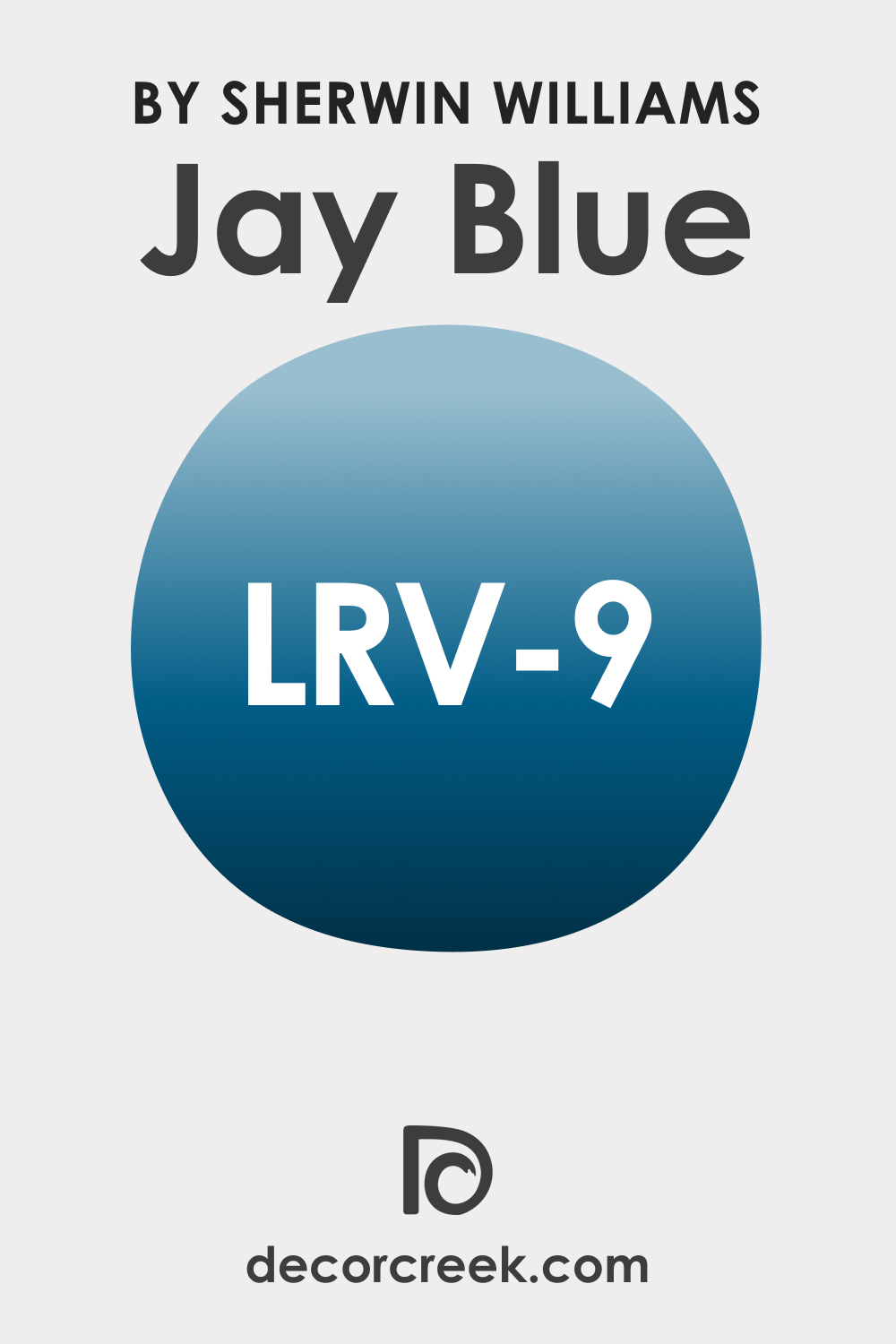
LRV – what does it mean? Read This Before Finding Your Perfect Paint Color
Trim Colors of SW 6797 Jay Blue
Trim colors are those hues you choose to paint architectural details, like moldings, window and door frames, and baseboards. Choosing the right trim color can enhance the room’s overall design, accentuating its features and adding depth and definition.
For SW 6797 Jay Blue, the following shades of white from the same brand could work brilliantly:
- SW 7005 Pure White (CHECK A SAMPLE): A true, neutral white that can provide a clean, crisp contrast to the rich Jay Blue, emphasizing its depth and vibrancy.
- SW 7008 Alabaster (CHECK A SAMPLE): A warm, creamy white that can soften the boldness of Jay Blue, creating a balanced and harmonious look.
- SW 7011 Natural Choice (CHECK A SAMPLE): A soft, warm white with subtle beige undertones that can complement the Jay Blue color by adding a touch of warmth to the overall palette.
Choosing the right trim color is essential because it can either highlight or downplay architectural features, contribute to the room’s mood, and help tie together the room’s color scheme.
A carefully chosen trim color can effectively accentuate the beauty of your primary color, creating a polished, cohesive look.

Colors Similar to SW 6797 Jay Blue
When embarking on a design journey, understanding colors similar to your chosen hue – in this case, SW 6797 Jay Blue – can be instrumental in achieving a cohesive, nuanced aesthetic. Similar colors can offer slight variations in tone, temperature, or saturation, providing alternative options that still align with your desired palette.
- SW 6796 Blue Plate (CHECK A SAMPLE): This color is a slightly cooler and more intense version of Jay Blue, retaining much of the inviting depth but with an added dash of vibrancy.
- SW 6801 Regale Blue (CHECK A SAMPLE): Offering a touch more saturation, Regale Blue carries the deep richness of Jay Blue but with a stronger presence, ideal for creating a bold statement.
As an option, you might also want to consider the following blue colors that read similar to SW Jay Blue:
- SW 6959 Blue Chip (CHECK A SAMPLE)
- SW 6804 Dignity Blue (CHECK A SAMPLE)
- SW 6796 Blue Plate (CHECK A SAMPLE)
Knowing similar colors is important for several reasons. First, they give you alternatives that can better suit your specific needs or preferences, whether you’re after a lighter, darker, cooler, or warmer version of your original choice. Second, similar colors can create a harmonious, layered color scheme, adding depth and richness to your décor.
Finally, similar colors can also help solve practical problems. For instance, if SW Jay Blue appears too dark in a particular room due to lighting conditions, a lighter but similar color can be a better fit.
Similarly, if you love Jay Blue but find it too vibrant for a large area, a more muted but similar color can offer a more comfortable solution. Having a good grasp of similar colors equips you with flexibility and choice in your design process.
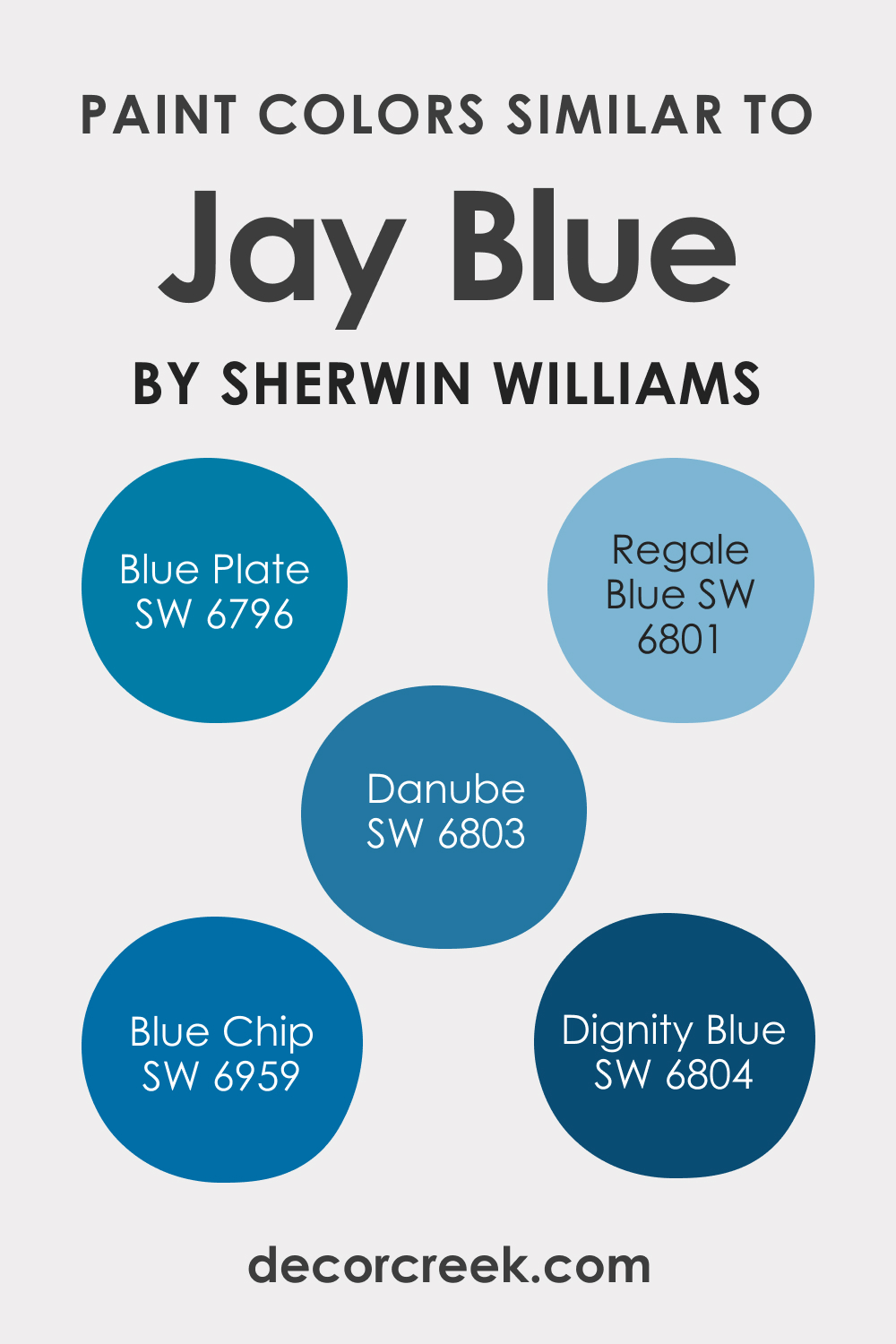
Colors That Go With SW 6797 Jay Blue
Creating a cohesive color scheme is paramount in achieving a balanced and visually appealing aesthetic. The colors that go well with SW 6797 Jay Blue are:
- SW 7006 Extra White (CHECK A SAMPLE): Extra White brings a clean, fresh contrast to Jay Blue, perfect for creating a sharp, contemporary look.
- SW 7015 Repose Gray (CHECK A SAMPLE): Repose Gray, a versatile light to medium gray, brings a modern touch to Jay Blue, softening its intensity without stealing its thunder.
- SW 6258 Tricorn Black (CHECK A SAMPLE): As a deep, dramatic shade, Tricorn Black can accentuate the crispness of Jay Blue, making a bold and sophisticated statement.
- SW 6172 Hardware (CHECK A SAMPLE): This neutral gray with a touch of warmth can serve as a soft contrast to Jay Blue, creating a chic, modern look.
- SW 6126 Navajo White (CHECK A SAMPLE): A creamy, warm white that brings an earthy contrast to the cool undertones of Jay Blue, providing a balanced palette.
- SW 6045 Emerging Taupe (CHECK A SAMPLE): A soft, warm taupe, it offers an organic complement to Jay Blue, enhancing its depth and adding a touch of coziness.
Selecting colors that look good together in a room helps create a harmonious, balanced aesthetic. Each color in the room, whether on the walls, furniture, or accessories, should contribute to a unified whole. The right color combination can enhance the mood, define the space, highlight architectural details, and create a visual flow that guides the eye around the room.
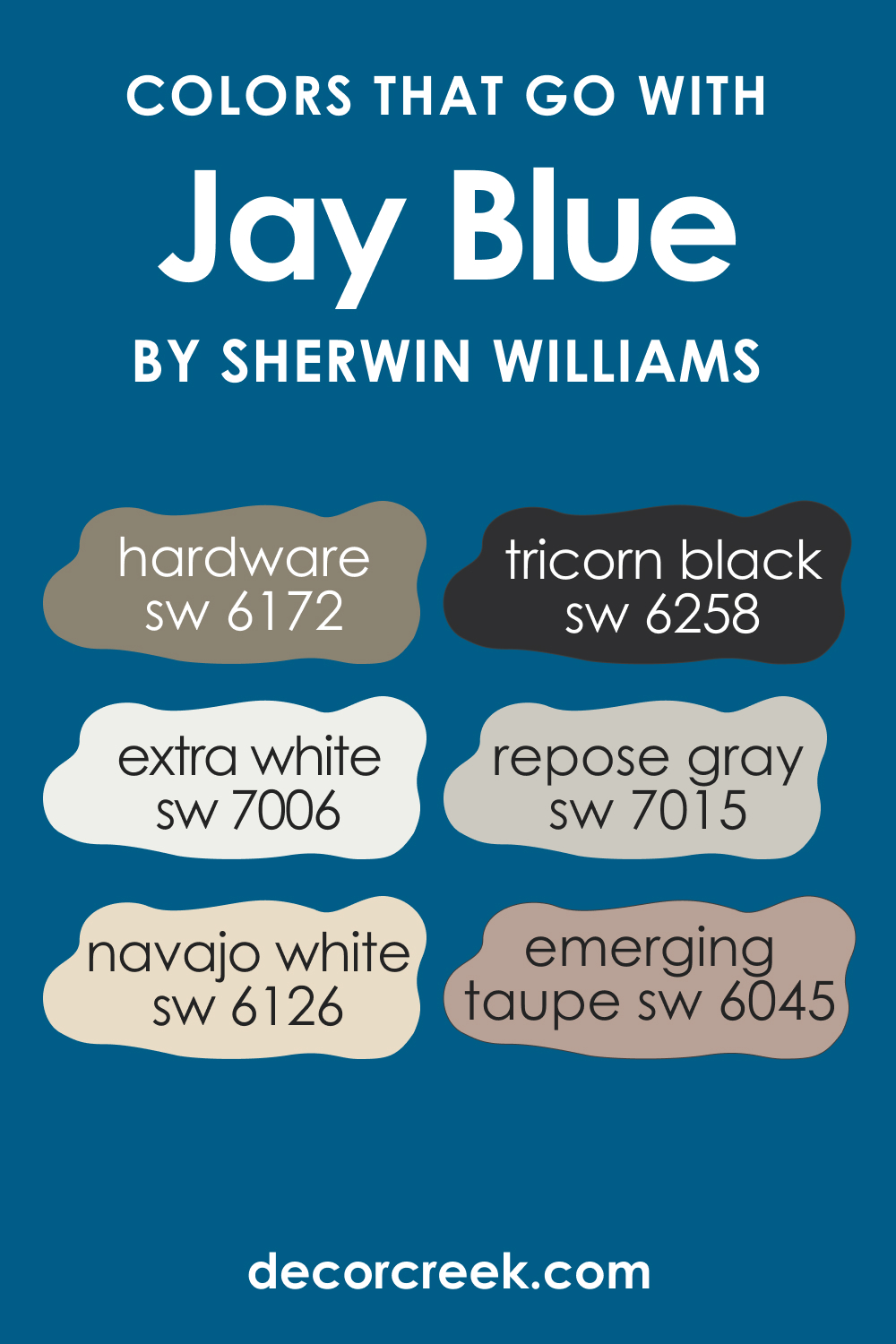
How to Use SW 6797 Jay Blue In Your Home?
SW Jay Blue is a versatile color that can be used in various rooms, depending on the atmosphere you wish to create. Due to its depth and richness, it is a color that can transform the vibe of any space, from creating a peaceful retreat in a bedroom to adding a touch of elegance in a dining room.
Regarding interior design styles, SW Jay Blue fits well within a range of aesthetics. In a coastal or Scandinavian design, it could mirror the hues of the sea, creating a soothing, tranquil environment. Alternatively, in a modern or contemporary setting, Jay Blue can add a bold, dramatic statement, especially when paired with crisp whites or sleek greys.
How to Use SW 6797 Jay Blue in the Bedroom?
A bedroom painted in Jay Blue can exude a sense of calm and tranquility, making it an ideal place for relaxation and rest. The rich, deep tone of this color can envelop the room in a soothing ambiance reminiscent of the serene beauty of a night sky. Pair Jay Blue with light, neutral tones on the ceiling and trim to create a refreshing contrast, and consider adding warm, wooden furniture and soft, cream-colored textiles to introduce a touch of warmth and comfort.
On the other hand, a bedroom designed with Jay Blue can also take a more vibrant route. Combine it with bold, contrasting colors such as coral or mustard yellow in your accents – like cushions, rugs, or wall art – to create a lively, contemporary space.
The robust and energetic vibe of such a palette can invigorate the room, making it not just a place for rest but also for inspiration and creativity.

How to Use SW 6797 Jay Blue in the Bathroom?
In the bathroom, Jay Blue can create a serene and spa-like environment, helping to transform the room into a relaxing retreat. By pairing it with white tiles, fixtures, and bath linens, you can achieve a fresh, clean, and aquatic aesthetic reminiscent of a luxury beach resort. Metallic accents, like silver or chrome fixtures, can add a modern, sophisticated touch to the design.
For a more eclectic bathroom design, consider using Jay Blue in conjunction with patterned tiles in coordinating colors. The deep, saturated hue of Jay Blue can make colorful patterns pop, adding a touch of energy and personality to the space.
Introduce some warm elements, like wooden shelves or a vintage rug, to bring a sense of comfort and balance to the cool tones of Jay Blue.
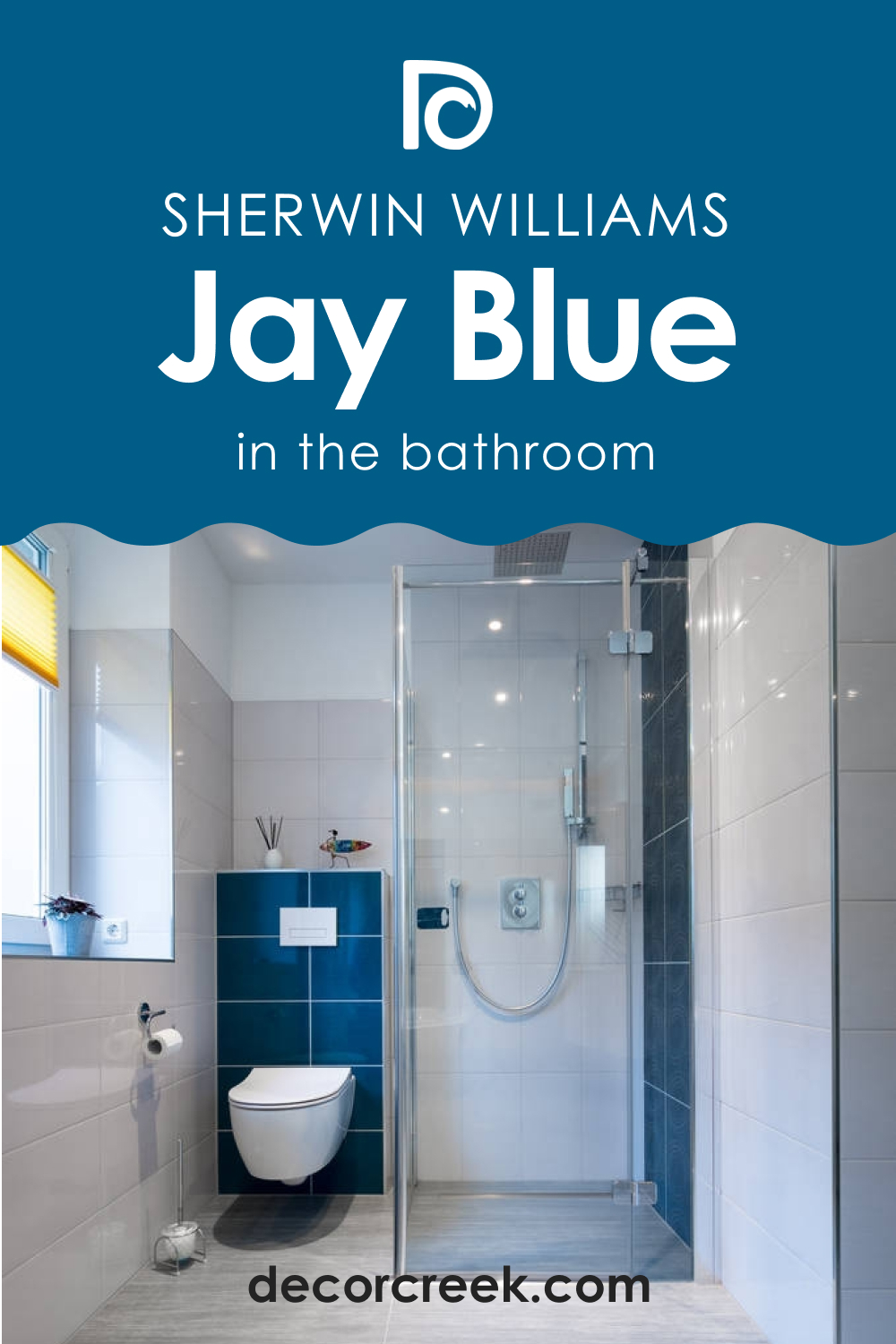
How to Use SW 6797 Jay Blue in the Living Room?
In the living room, Jay Blue can create a focal point, especially when used on a feature wall. This bold, vibrant color can bring depth and dimension to your living area, creating a dramatic backdrop for artwork, mirrors, or a sleek television screen. Pair it with a crisp white ceiling and trims to provide a visually pleasing contrast, and incorporate soft neutrals in your furniture and textiles to create a harmonious balance.
If you wish to embrace the elegance of Jay Blue fully, consider painting all the living room walls in this hue. The resulting aesthetic will be rich, inviting, and captivating, evoking the grandeur of a deep blue sea or a night sky full of stars.
To prevent the room from feeling too dark or overwhelming, introduce plenty of texture and lighter colors in your furnishings and décor, such as a cream-colored sofa, a plush white rug, or a glass coffee table.

How to Use SW 6797 Jay Blue for an Exterior?
For the exterior of a home, Jay Blue can create a unique, eye-catching look. This vibrant, deep blue hue can provide a refreshing departure from more traditional exterior colors, showcasing your home’s individuality and style. Pair it with crisp white trims for a clean, nautical-inspired aesthetic, or go for a more natural look with stone or wooden accents.
Jay Blue can also be used on exterior features like front doors or window shutters for a pop of color that adds curb appeal. The richness of the color makes it a lovely contrast against neutral-toned exterior walls, drawing attention to the architectural details of your home.
Remember, exterior colors often appear lighter in the bright outdoor light, so Jay Blue may look less intense outside than it does inside.
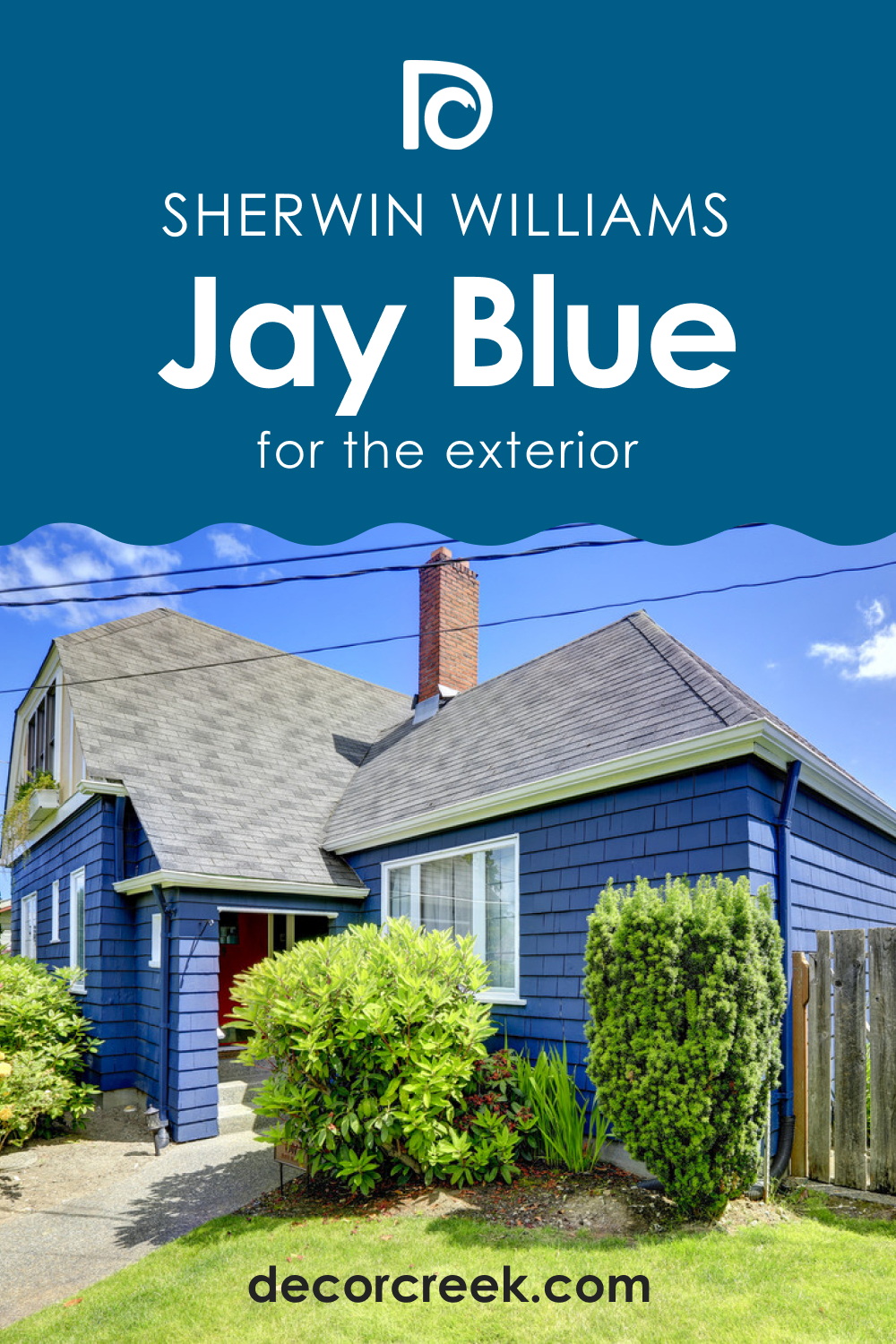
How to Use SW 6797 Jay Blue in the Kitchen?
A kitchen painted in Jay Blue can exude a welcoming and inviting vibe. The richness of this color can balance the typically light and neutral tones found in most kitchens, creating a pleasing visual contrast. When used on the walls, Jay Blue can provide a captivating backdrop for white cabinets and stainless steel appliances. Light countertops, such as marble or quartz, can further enhance this contrast, resulting in a fresh, modern aesthetic.
For a more daring design, consider using Jay Blue on the kitchen island or lower cabinets. This approach can introduce a pop of color into the room without overpowering it. Again, balance is key, so pair this bold blue with lighter tones elsewhere in the kitchen. This includes the upper cabinets, backsplash, and countertops, as well as any open shelving or bar stools.
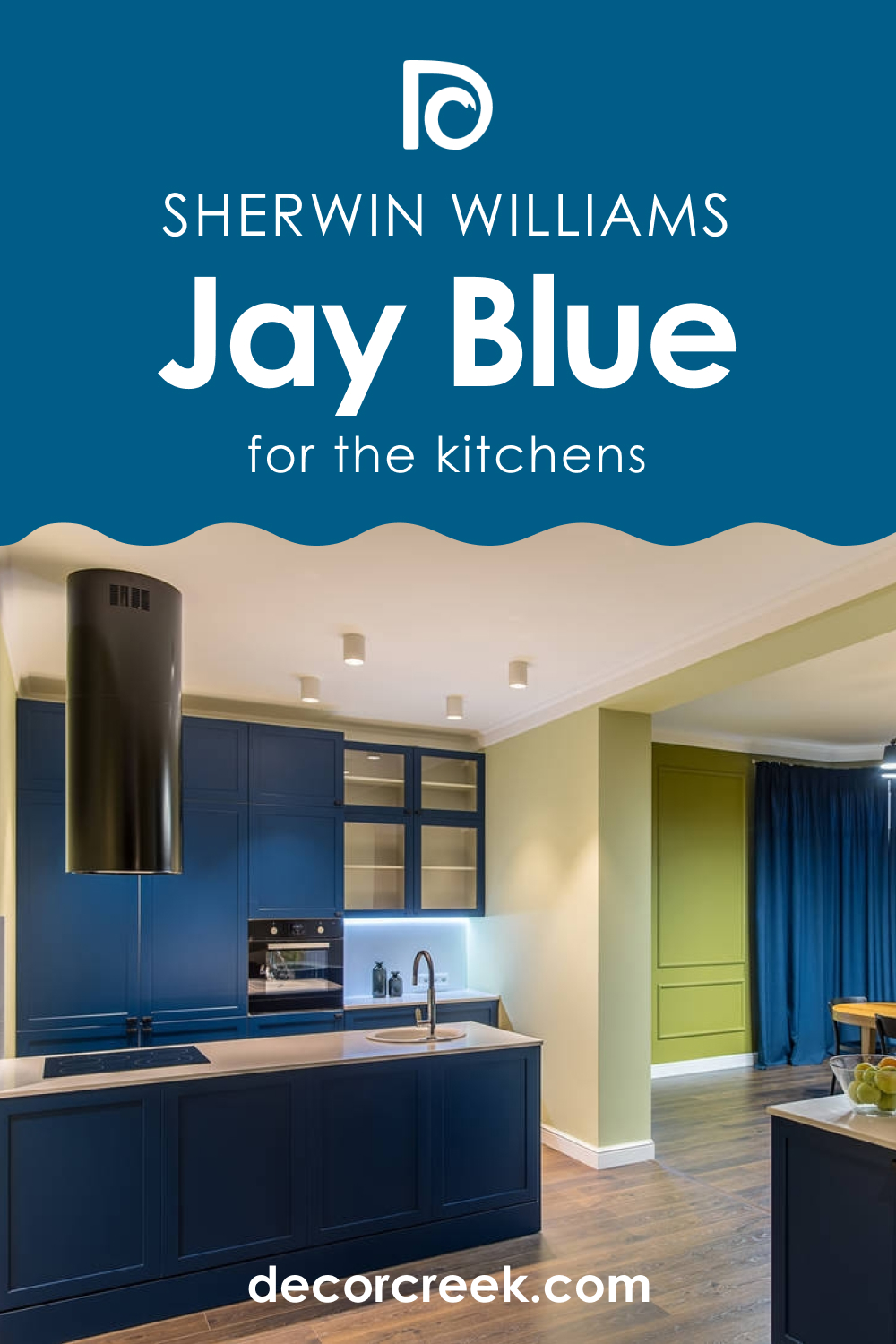
How to Use SW 6797 Jay Blue for the Kitchen Cabinets?
Using Jay Blue for your kitchen cabinets can provide a bold and dramatic focal point. This approach transforms your cabinets into a standout feature, turning them into pieces of art in their own right. Balance this intensity with lighter tones on your walls, backsplash, and countertops, such as whites or soft grays. This contrast will not only make your cabinets pop but also keep the room feeling light and open.
If painting all of your cabinets in Jay Blue feels too overpowering, consider using it only on the lower cabinets or the kitchen island. This strategy will still introduce a touch of drama and color but in a more subtle and understated manner.
For cohesion, pick up the Jay Blue in other elements of the room, such as a patterned rug or decorative accents. Remember, when it comes to using bold colors, it’s all about balance, contrast, and harmony.
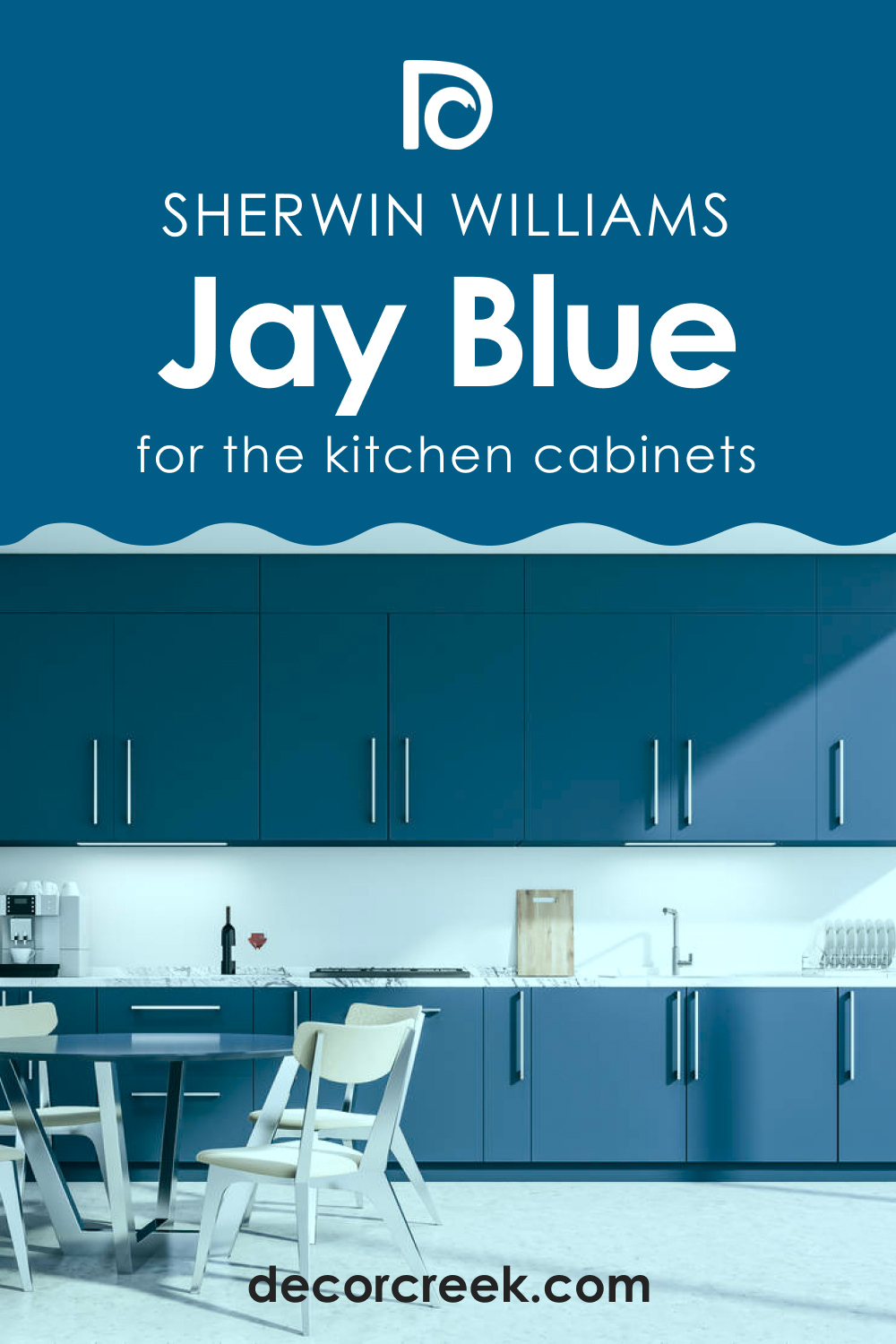
Comparing SW 6797 Jay Blue With Other Colors
Comparing colors enhances your ability to create a visually pleasing and functional space that aligns with your design goals. It aids in making informed decisions, preventing potential clashes, and achieving the desired atmosphere and aesthetic. You can see how it works if you read how SW Jay Blue compares with other colors.
SW 6797 Jay Blue vs. SW 6244 Naval
SW 6244 Naval (CHECK A SAMPLE) is a deeper, darker shade compared to Jay Blue. Its rich navy tone carries a more traditional feel reminiscent of classic naval uniforms and ocean depths. When compared to Jay Blue, Naval exudes a higher level of sophistication and formality.
SW Jay Blue, on the other hand, with its lighter and more vibrant character, feels more playful and modern. Both colors, though, can create a relaxing and calming atmosphere, evoking images of the endless sea.
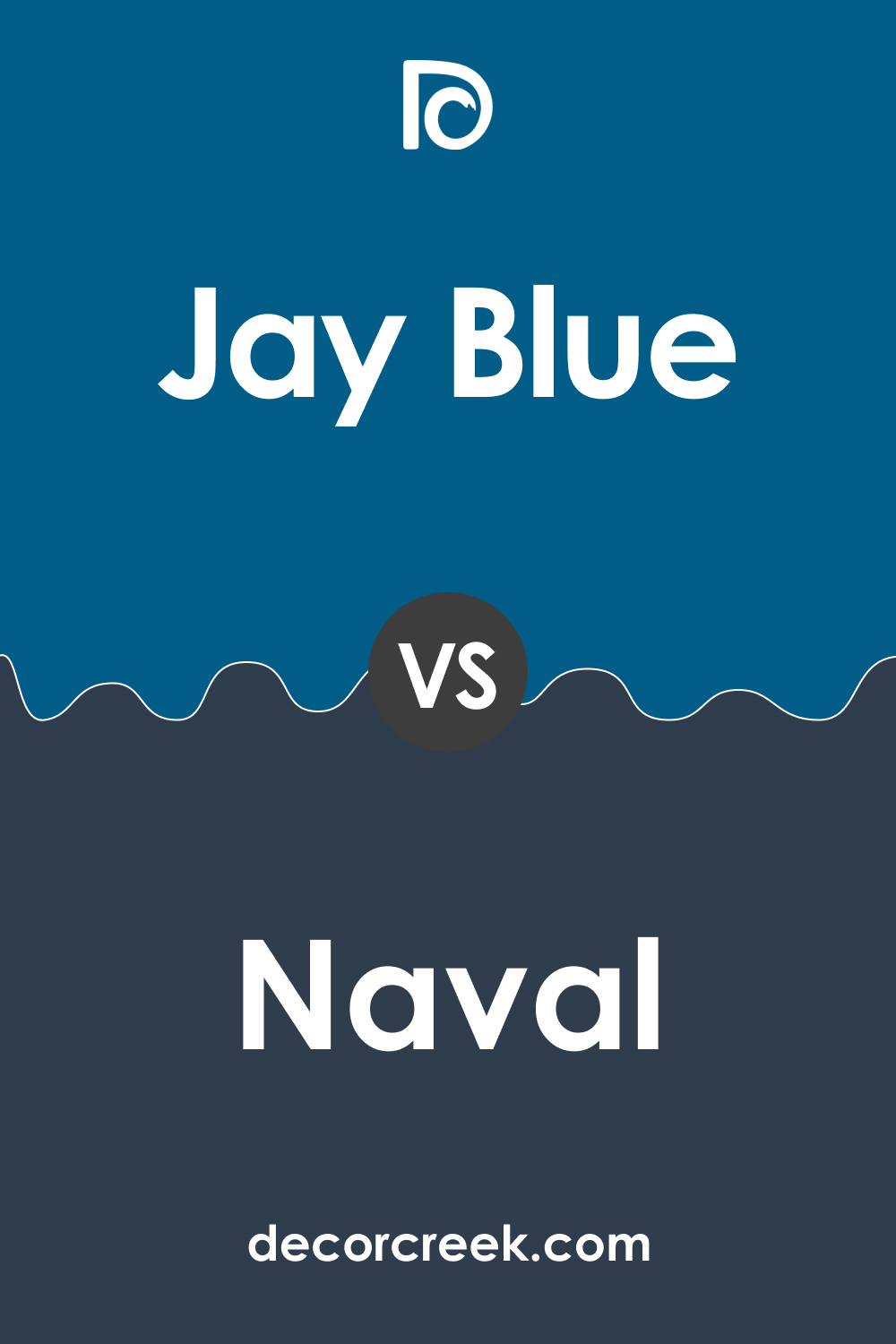
SW 6797 Jay Blue vs. SW 6801 Regale Blue
SW 6801 Regale Blue (CHECK A SAMPLE) is a more saturated and bolder variant than Jay Blue. It possesses a vibrant depth that can command attention in any space. On the other hand, Jay Blue, while still rich, has a softer, more muted tone, making it more adaptable to various spaces and lighting conditions.
If you are seeking a color that is bold and makes a statement, Regale Blue might be your choice, whereas Jay Blue offers a more tranquil and versatile palette.

SW 6797 Jay Blue vs. SW 9165 Gossamer Veil
SW 9165 Gossamer Veil (CHECK A SAMPLE) is a warm gray with a hint of green undertone. When compared to the depth and intensity of Jay Blue, Gossamer Veil is much softer and more neutral. This light gray brings a tranquil feel to spaces, but it doesn’t provide the same depth and drama as Jay Blue.
While Jay Blue is perfect for creating standout features or accent walls, Gossamer Veil serves as a versatile backdrop that can complement a variety of design elements and color schemes.
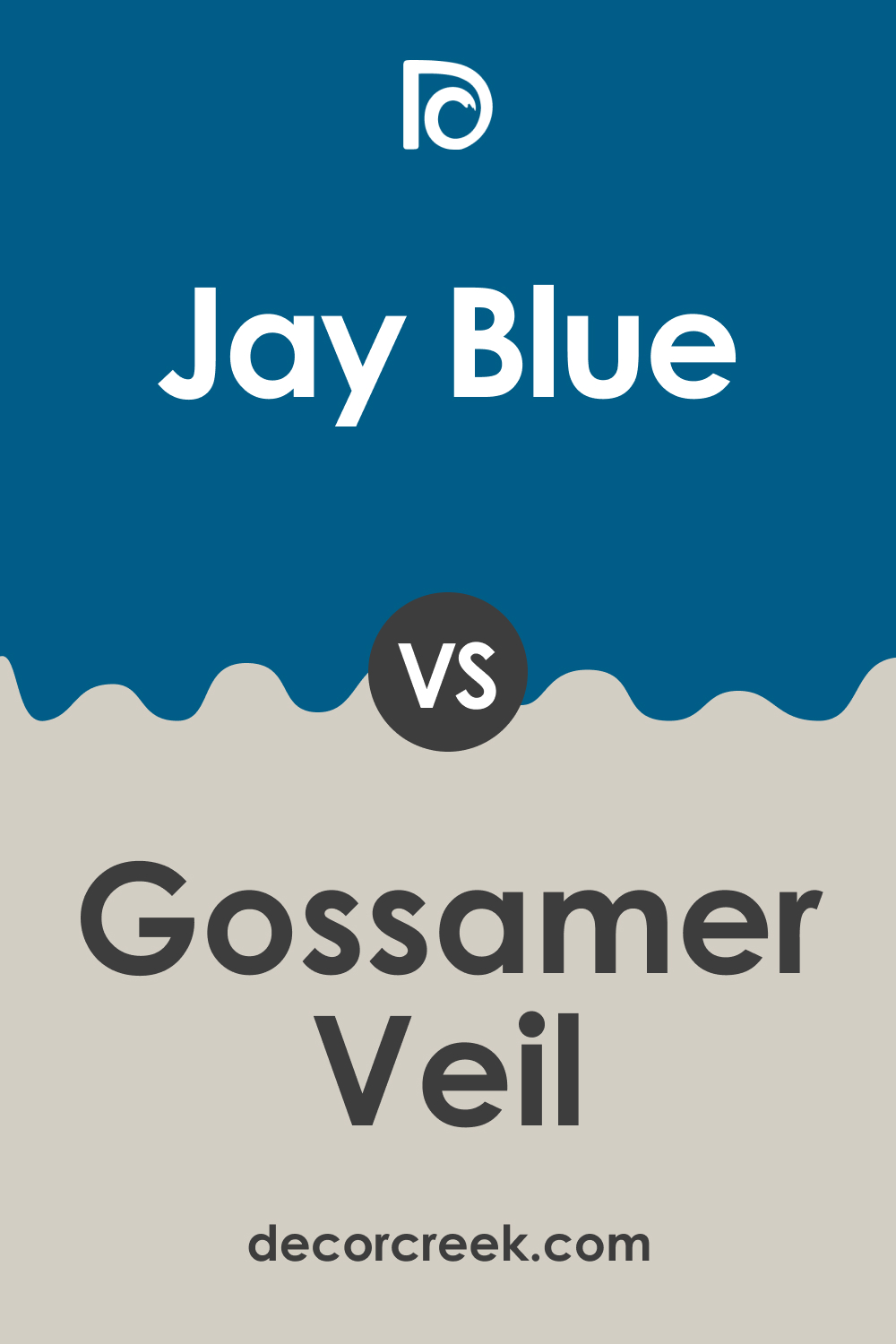
SW 6797 Jay Blue vs. SW 7006 Extra White
SW 7006 Extra White is a pure (CHECK A SAMPLE), clean white that offers a stark contrast to the rich, deep tones of Jay Blue. While Jay Blue brings depth and drama to a space, Extra White provides a breath of freshness and openness. The crispness of Extra White can accentuate the richness of Jay Blue, creating a dynamic, high-contrast palette that is both classic and contemporary.
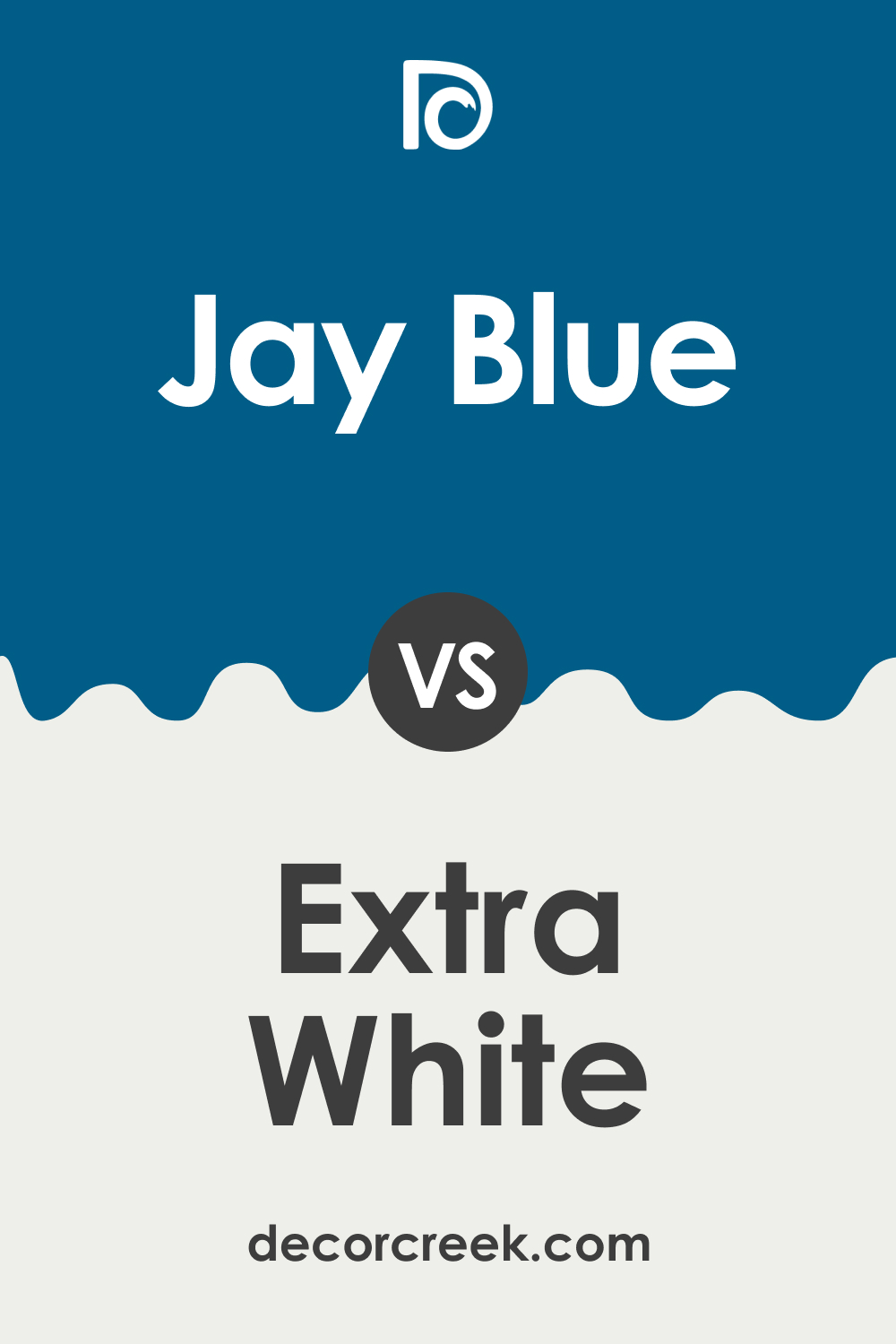
SW 6797 Jay Blue vs. SW 9109 Natural Linen
SW 9109 Natural Linen (CHECK A SAMPLE) is a light, warm neutral with subtle beige undertones. Compared to Jay Blue, Natural Linen is understated and soft, creating a comfortable and cozy feel in a room.
When used together, the warm undertones of Natural Linen beautifully complement the cool undertones of Jay Blue, creating a balanced and harmonious palette that feels both inviting and sophisticated.
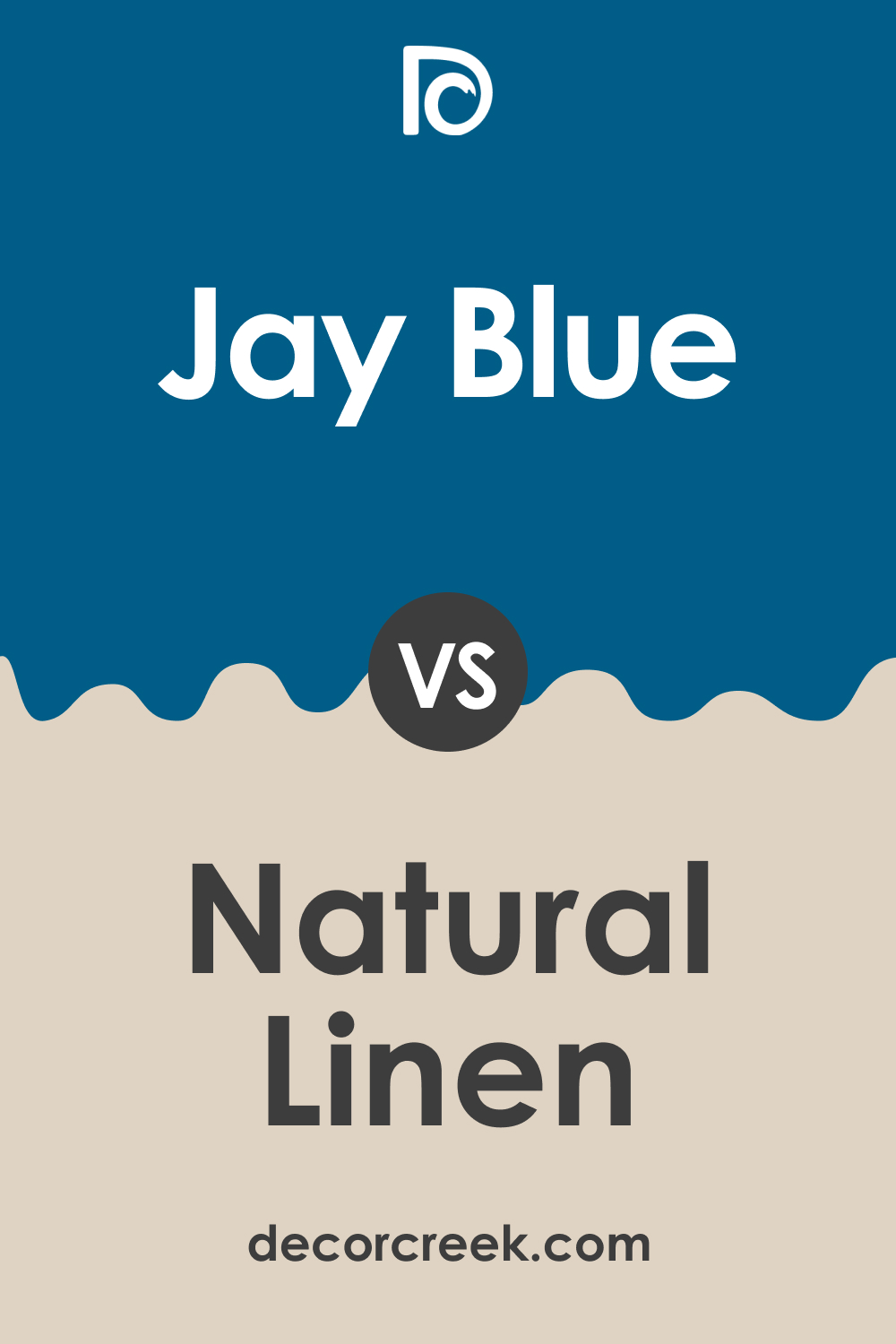
Conclusion
In conclusion, SW 6797 Jay Blue is a versatile, vibrant, and impactful color. Its depth and richness can transform any space into a calming and sophisticated retreat, evoking imagery of a tranquil ocean or a serene sky. This color carries a timeless appeal that can fit seamlessly into a variety of interior design styles, whether it’s contemporary, coastal, or eclectic.
Despite its depth, Jay Blue is surprisingly adaptable, pairing well with a broad spectrum of hues. It also benefits from the striking contrast offered by shades of white, making it a stunning choice for walls, cabinets, or even exteriors.
However, the magic of Jay Blue truly shines when lighting, coordinating colors, and similar colors are taken into account. The impact of lighting, the understanding of its low LRV, and the effect of its cool undertones all contribute to maximizing Jay Blue’s potential in any space.

Ever wished paint sampling was as easy as sticking a sticker? Guess what? Now it is! Discover Samplize's unique Peel & Stick samples.
Get paint samples
Frequently Asked Questions
⭐What type of rooms work best with SW 6797 Jay Blue?
SW 6797 Jay Blue is a versatile color that can work in various types of rooms. Its depth and richness can add drama and sophistication to living rooms, bedrooms, and kitchens. It also creates a relaxing ambiance in bathrooms. Furthermore, it's a stunning choice for exterior use, particularly when paired with crisp white trims.
⭐What colors coordinate well with SW 6797 Jay Blue?
A variety of colors coordinate well with Jay Blue. Neutrals such as SW 9109 Natural Linen, SW 9084 Cocoa Whip, and whites like SW 7008 Alabaster or SW 7006 Extra White can provide a stunning contrast. Cool hues like SW 6798 Iceberg add a serene touch. Similarly, deep tones like SW 7069 Iron Ore or SW 7071 Gray Screen can help create a rich, sophisticated palette.
⭐How does lighting affect the look of SW 6797 Jay Blue?
The appearance of Jay Blue can significantly change depending on the lighting conditions. In spaces with abundant natural light, Jay Blue may appear brighter and more vibrant. In contrast, in spaces with less natural light or during the evening under artificial light, Jay Blue can appear deeper and more intense.
⭐What is the LRV of SW 6797 Jay Blue, and why does it matter?
The Light Reflectance Value (LRV) of Jay Blue is 9, indicating it is a fairly dark color that doesn't reflect a lot of light. This can make small spaces feel more intimate and cozy. However, in smaller or poorly lit spaces, it can also make the room feel darker. It's essential to consider the LRV when selecting paint colors, particularly for small spaces or rooms with little natural light.
⭐Can I use SW 6797 Jay Blue for my kitchen cabinets?
Absolutely! Jay Blue can create a bold and dramatic look on kitchen cabinets. To prevent the color from overpowering the room, consider pairing it with lighter tones on your walls, backsplash, and countertops. You might also consider using Jay Blue on just the lower cabinets or a kitchen island for a more subtle introduction of color.
